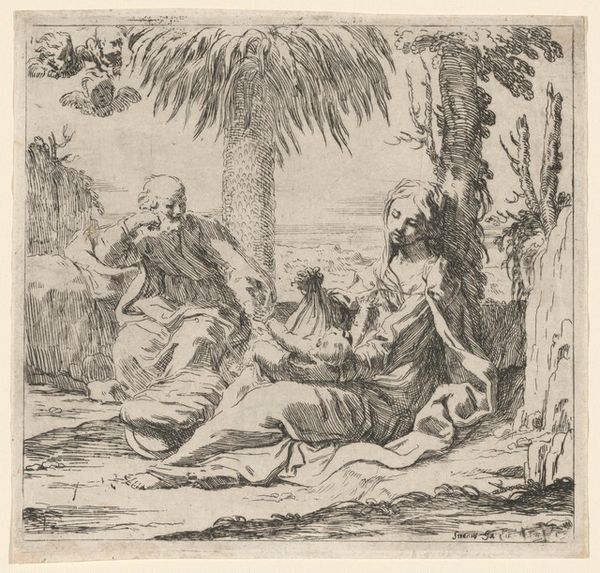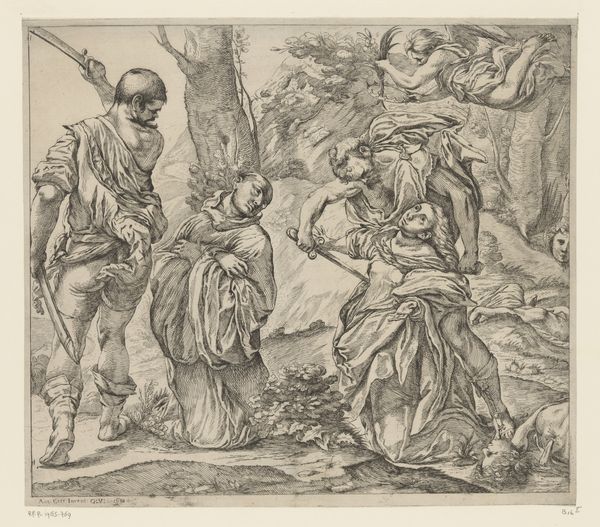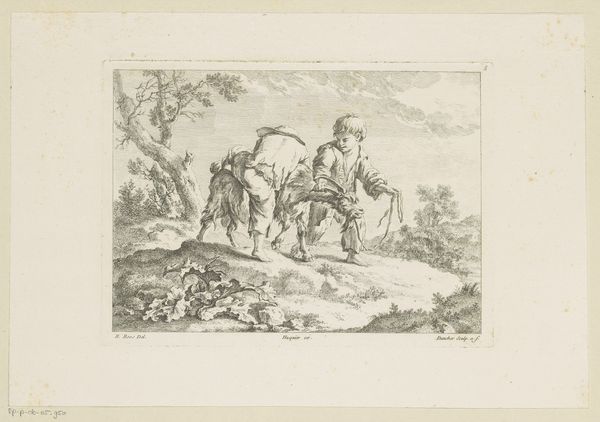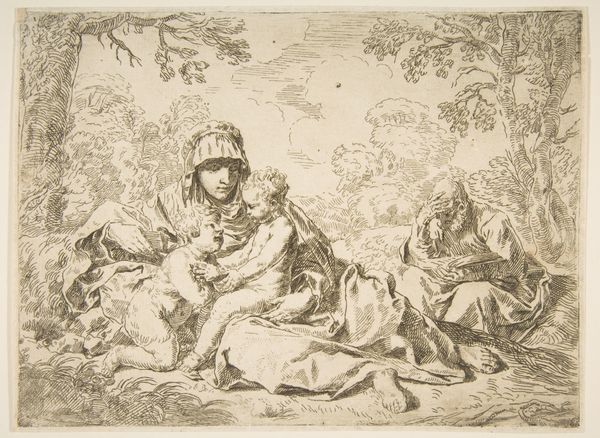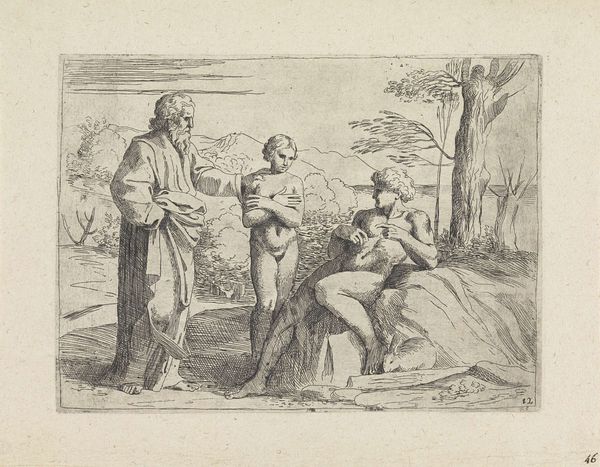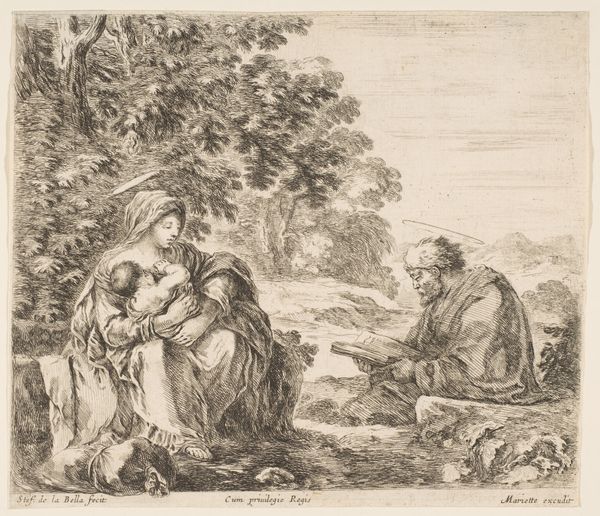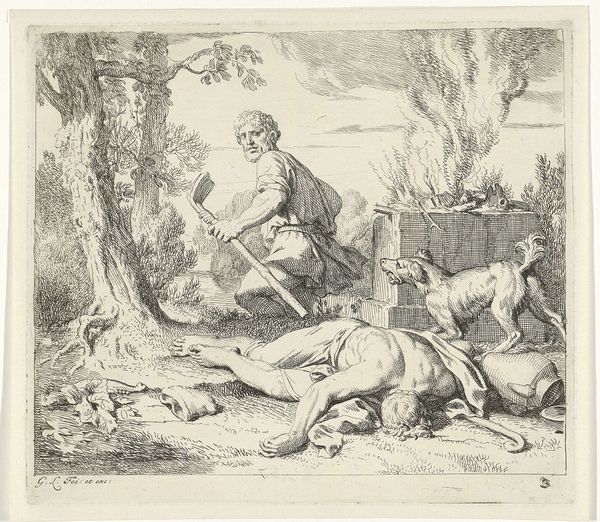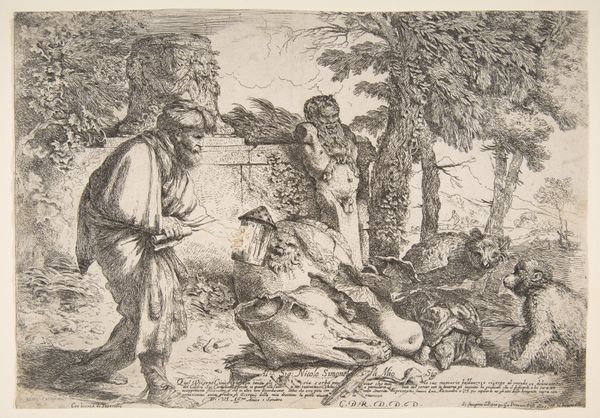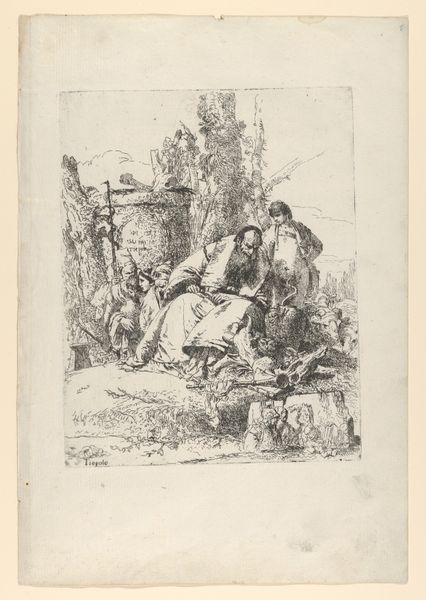
Rest on the flight into Egypt, Mary holding the infant Christ with St. Joseph at right, copy after Cantarini 1620 - 1630
0:00
0:00
drawing, print, etching, ink
#
drawing
#
ink drawing
# print
#
pen sketch
#
etching
#
landscape
#
figuration
#
ink
#
pencil drawing
#
history-painting
#
italian-renaissance
Dimensions: Plate: 7 5/16 × 10 7/16 in. (18.5 × 26.5 cm)
Copyright: Public Domain
Editor: This pen and ink drawing, "Rest on the Flight into Egypt, Mary holding the infant Christ with St. Joseph at right, copy after Cantarini," dates from around 1620 to 1630. It strikes me as having such a gentle, familial quality despite the clear strain of travel. What is your interpretation of this work? Curator: This drawing offers a window into the visual culture of its time and reveals how religious narratives were being reshaped and disseminated. Given it's a copy, the question becomes, what was Cantarini, and the person copying him, trying to convey, and to what audience? The subject, of course, is the Holy Family's escape from Herod, but consider the landscape. Does it evoke a specific place or is it a more generalized pastoral setting? Editor: I suppose it feels intentionally vague, almost stage-like. Like the setting doesn't matter as much as the players. Curator: Exactly! And that’s key to understanding its purpose. Prints like these circulated widely, making religious stories accessible to a broader audience than, say, a large altarpiece in a church could. Copies further democratize access to art. Who was consuming these images and what messages were they taking away from them about family, faith, and perhaps even the political landscape? Editor: That's a good point! The availability of copies allows for widespread viewership. Curator: Precisely. Think about how the image might function as a model for piety in the home, shaping beliefs and behaviors. Does the print celebrate the perseverance of this family, or offer comfort in a tumultuous time? These aspects would have affected how such artwork was valued then. Editor: That context completely changes my view of it. Thank you! Curator: And thank you for helping me remember why understanding an artwork’s social life is so important.
Comments
No comments
Be the first to comment and join the conversation on the ultimate creative platform.
